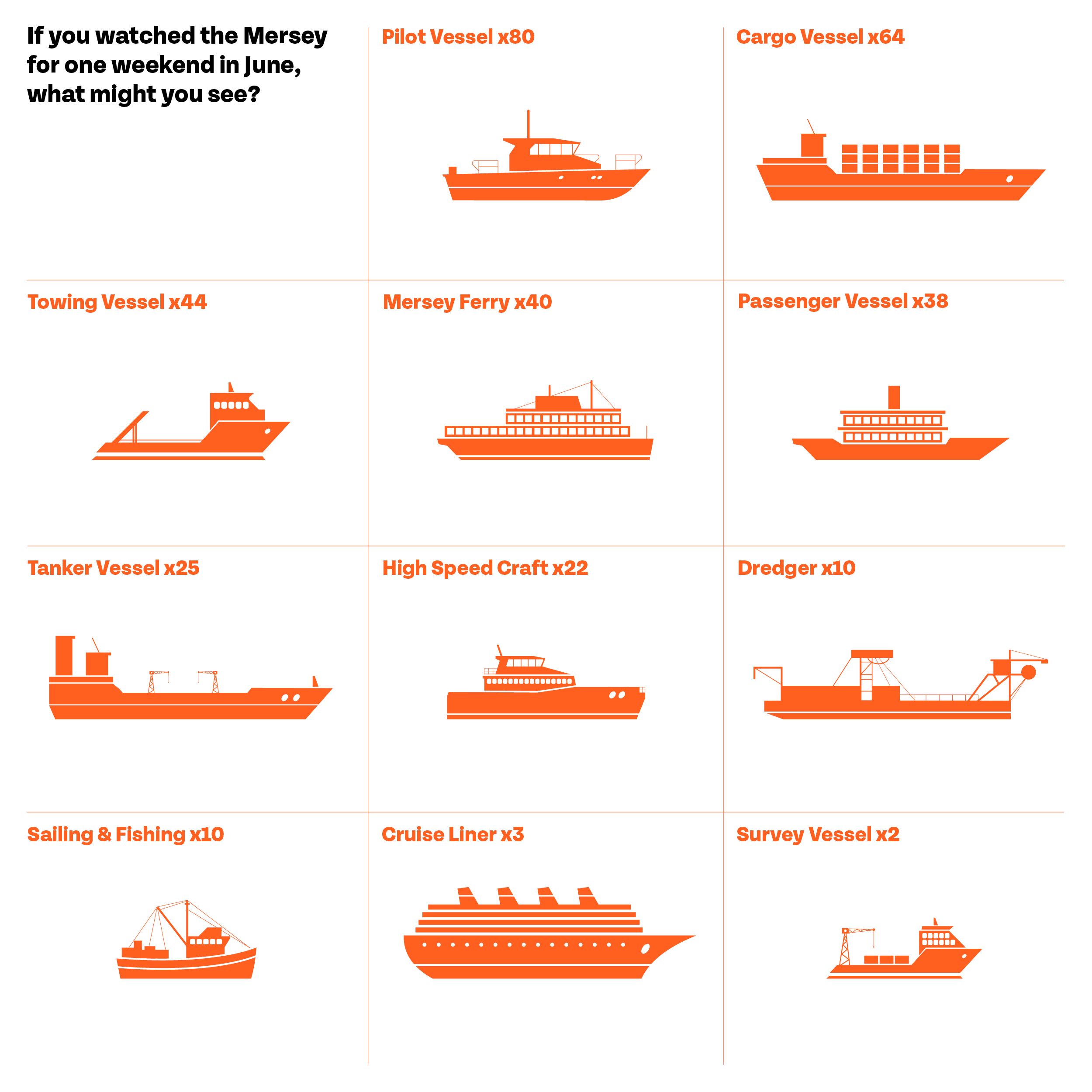“Vessel Traffic Services is like air-traffic-control for the sea,” says Dr Simon Lee, Principal Researcher at Denbridge Marine in Monks Ferry, which builds software to allow ports, coastguards and oil rigs around the world to monitor marine traffic.
It also operates a test camera at New Brighton’s Fort Perch Rock. “A combination of radar, CCTV and the Automatic Identification System (a VHF-based self-reporting system that all large marine vessels must carry) monitors marine traffic within 30 nautical files, to observe and manage busy waterways throughout the world. And the Mersey is busy.”
Busy, and dangerous. Dangerous to smaller sailing vessels, due to the presence of much larger – more than 200m – tankers, who can’t stop or change direction on a sixpence.
Only the sailing boats Isabel II and Lagertha ventured out of port this weekend, sailing up the Wirral coast well out of the way of the main shipping lane. Fishing vessels too tend to confine themselves to the shallower areas around New Brighton, where the tankers can’t go.
The danger’s not confined to sailing vessels. The Mersey is extremely tidal, with a depth change of around 10m between high and low tide.
A deep, narrow channel stretches west of Formby Point before curving south east past Burbo Point and into port, that vessels with a large ‘draught’ (under water depth) fail to follow at their peril. It’s easy for uninitiated captains to run aground if they don’t follow the precise depth contours of the channel.
For this reason, the most frequent sight on the river is the small rapid pilot vessels – Petrel and Razorbill, amongst others. These boats take highly skilled pilots out to anchorage areas to guide the tankers into port when the time and, most importantly, the tide, is right.
Look towards North Wales from New Brighton and you’ll often see these vessels sitting hazily on the horizon as they wait for high tide. “When the tide rises, there’s a ‘cavalry charge’ of tankers and container vessels in and out of port,” says Simon.
“There are actually relatively few large vessels after that – the Mersey is left alone to the ferries, pilot vessels and offshore wind craft like the Rix Panther.”

Cargo ships and tankers are the bread-and-butter maritime traffic, serving industry and commerce across the North West. Cargo ships are vast – like the 294m container ship OCL St. Lawrence.
And there’s plenty of people-based maritime traffic, from the inter-city ferries and cruise liners; Stena, P&O and the Steam Packet Company travel to and from Belfast, Dublin and the Isle of Man respectively.
“The sleek Mannanan – the Isle of Man catamaran – is worth a mention,” says Simon. “Capable of travelling over 37.5kn full laden – 43mph – it’s rapid in nautical terms.”
Our snapshot also captured the beautiful Waverley – the world’s last seagoing paddle steamer – travelling between Liverpool and Llandudno.
Of constant delight – on shore and off – are the huge cruise liners. Simon says: “In this 100 hour period, the north west was visited by the Fred Olsen Borealis, a 238m cruise ship carrying up to 1400 passengers; the Viking Venus (228m); and the Celebrity Apex (306m).”
Needless to say, the Left Bank affords the best view of them and their spectacular fireworks displays.
And what of the most ubiquitous of the passenger ships? “The Mersey Ferry doesn’t need high tide and runs several times daily – sometimes this is the ‘Dazzle Ferry’, the Royal Snowdrop; sometimes the more sedately-coloured Royal Iris. They shared 40 trips over these 100 hours.”
And then there are the workhorses – the tugs and towing vessels. These really can spin on a sixpence and travel in all directions. “They push, pull and generally cajole vessels ten times their size into position and help in engine difficulties,” says Simon.
“The dredgers are busy too: keeping the sea bottom free of silt, they make sure the Mersey’s navigable by the largest vessels, criss-crossing their way in the channel, day and night."